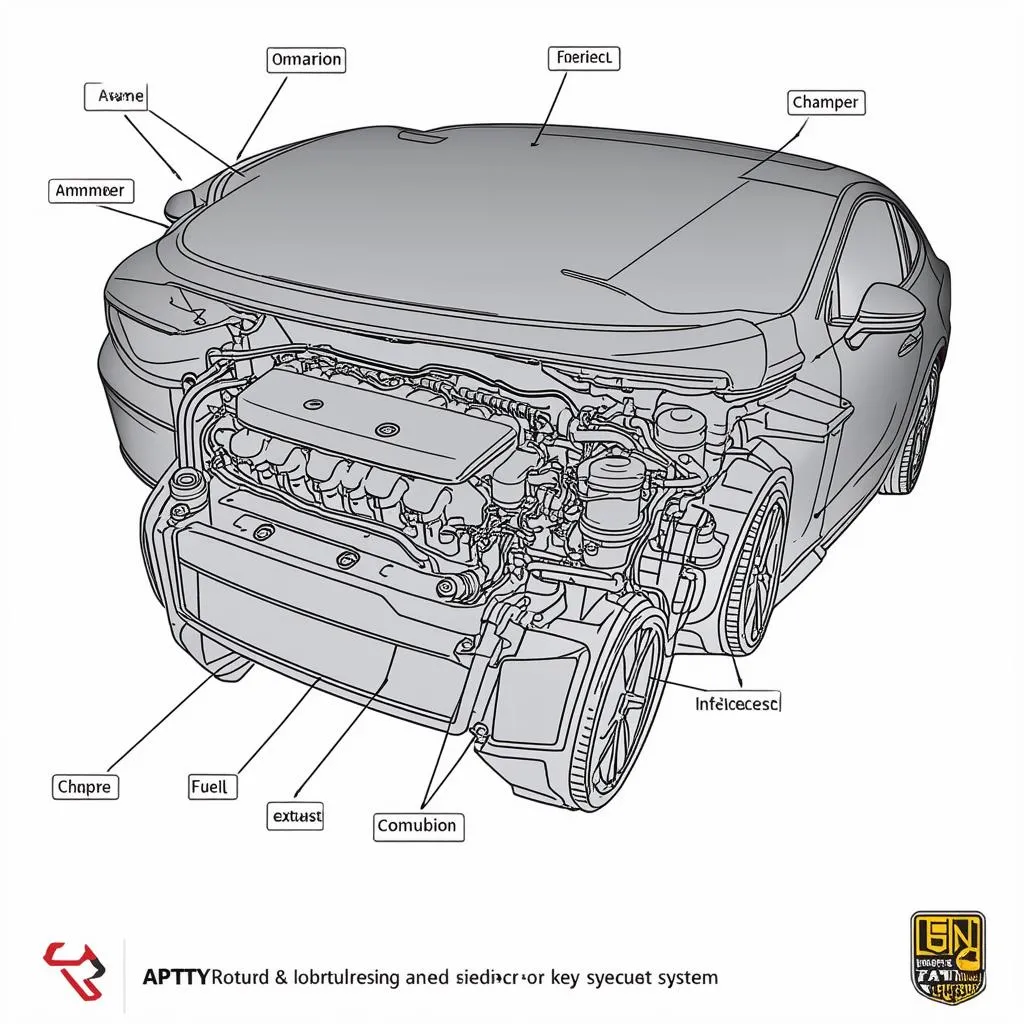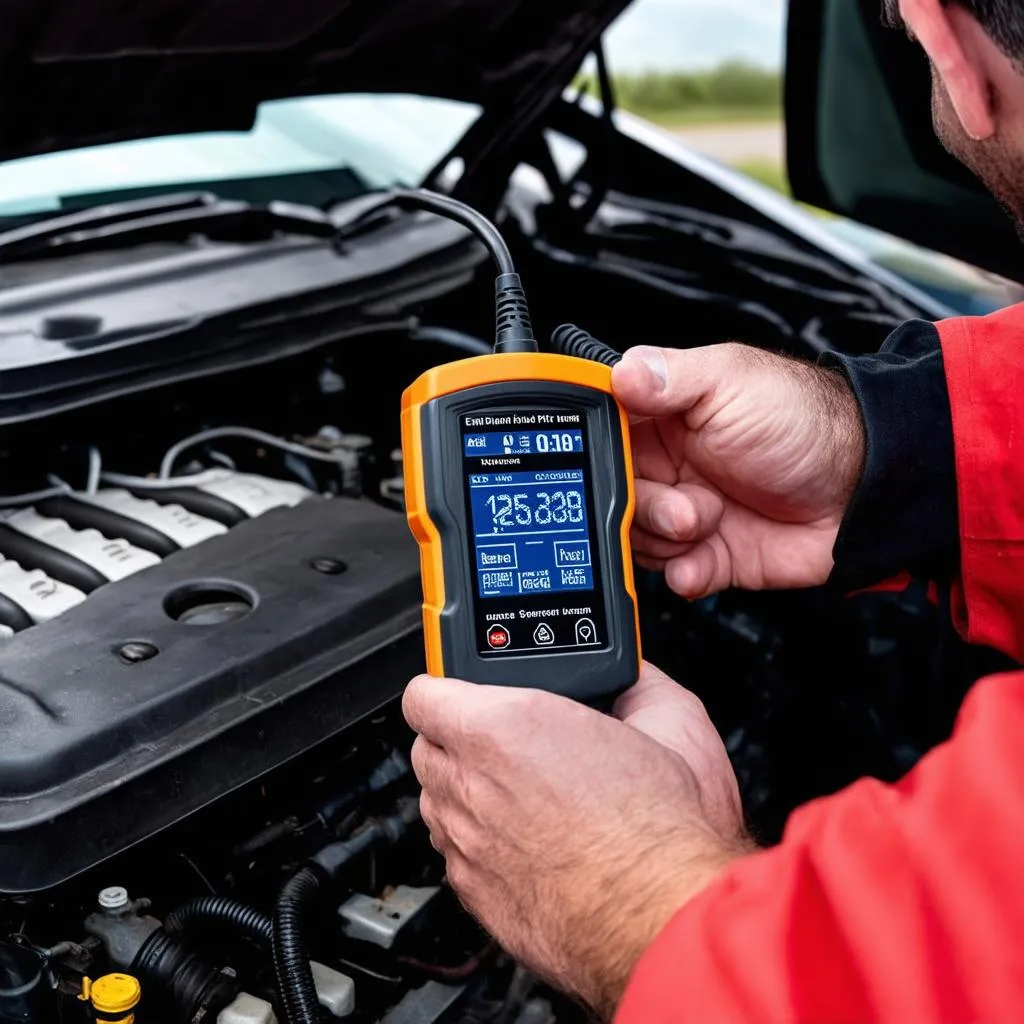This scenario is all too familiar for many car owners, often leading to anxiety and a trip to the mechanic. One common culprit behind this automotive headache is the Obd Code P2187, which indicates a problem with your engine’s air-fuel mixture – specifically, it’s running too lean.
In this comprehensive guide, we’ll delve into the intricacies of OBD code P2187, exploring its potential causes, symptoms, diagnostic procedures, and solutions. We’ll empower you with the knowledge to understand this common engine code and take the necessary steps to restore your vehicle’s performance and your peace of mind.
Understanding the Language of Your Car: What Does Obd Code P2187 Mean?
Before we can address the issue, it’s crucial to understand what your car is trying to tell you. OBD stands for On-Board Diagnostics, and every modern vehicle is equipped with this system to monitor various engine parameters. When the system detects an anomaly, it generates a specific code, such as P2187, to pinpoint the problem area.
P2187 specifically indicates that the air-fuel mixture in your engine is too lean. In simpler terms, it means there’s too much air and not enough fuel being delivered to the combustion chamber. This imbalance can disrupt the engine’s delicate combustion process, leading to a range of performance issues.
 Engine Diagram
Engine Diagram
What Causes a Lean Fuel Mixture (P2187)?
Unraveling the mystery of a lean fuel mixture requires a closer look at the intricate workings of your car’s engine management system. Several culprits could be contributing to this issue:
1. Faulty Oxygen Sensor (O2 Sensor)
Think of your oxygen sensor as the engine’s air-fuel ratio detective. It constantly monitors the oxygen content in the exhaust gases, providing crucial information to the engine control unit (ECU) to maintain the optimal air-fuel mixture. A malfunctioning O2 sensor can send inaccurate readings to the ECU, leading to a lean fuel mixture.
2. Vacuum Leaks
Just like a straw needs a tight seal to sip your drink, your engine needs a secure vacuum system to function properly. Vacuum leaks, often caused by cracked hoses or loose connections, can disrupt the air intake flow, upsetting the air-fuel balance.
3. Malfunctioning Fuel Injectors
Fuel injectors are responsible for delivering a precise amount of fuel into the combustion chamber. Clogged, dirty, or faulty injectors can disrupt this delicate process, resulting in insufficient fuel delivery and a lean fuel mixture.
4. Fuel Pressure Issues
Maintaining the correct fuel pressure is vital for optimal engine performance. A weak fuel pump or a blockage in the fuel lines can lead to low fuel pressure, starving the engine of the fuel it needs.
5. Air Intake Restrictions
Just as a clogged artery restricts blood flow, a restricted air intake can hinder the engine’s ability to draw in sufficient air. This imbalance can disrupt the air-fuel ratio, leading to a lean mixture.
Recognizing the Symptoms: How Do You Know if Your Car Has Obd Code P2187?
While the check engine light is a clear indicator of a potential problem, your car might also exhibit other telltale signs of a lean fuel mixture:
- Rough Idling or Stalling: A lean mixture can disrupt the smooth combustion process, causing the engine to idle roughly or even stall, especially when starting or at low speeds.
- Hesitation or Misfires During Acceleration: When you press the gas pedal, a lean mixture might cause the engine to hesitate or misfire due to the imbalanced combustion.
- Increased Engine Noise: A lean mixture can cause the engine to run hotter, potentially leading to knocking or pinging noises, particularly under load.
- Reduced Fuel Efficiency: While it might seem counterintuitive, a lean mixture doesn’t necessarily equate to better fuel economy. In fact, it can often lead to reduced fuel efficiency as the engine struggles to operate smoothly.
Diagnosing and Resolving Obd Code P2187
Accurately diagnosing the root cause of OBD code P2187 requires a systematic approach, utilizing specialized diagnostic tools and the expertise of a qualified mechanic.
Here are some common diagnostic steps:
-
Retrieve and Analyze OBD Codes: Using an OBD-II scanner, a mechanic can retrieve the specific error codes stored in your car’s computer. This provides a starting point for diagnosis.
-
Inspect for Vacuum Leaks: The mechanic will thoroughly inspect all vacuum hoses, connections, and components for any signs of leaks, often using a smoke test for accurate detection.
-
Test Fuel Pressure: Measuring the fuel pressure ensures that the fuel pump and fuel lines are delivering the required fuel pressure to the engine.
-
Examine Fuel Injectors: Checking the fuel injectors for clogging, dirt buildup, or malfunctioning components is crucial for ensuring proper fuel delivery.
-
Inspect Air Intake System: The mechanic will inspect the air filter, mass airflow sensor (MAF), and throttle body for any restrictions or contamination that might be affecting airflow.
 OBD Scanner in Use
OBD Scanner in Use
Frequently Asked Questions about Obd Code P2187
Q: Can I still drive my car with a P2187 code?
While you might be able to drive short distances, it’s not recommended to ignore this code. Driving with a lean fuel mixture can potentially cause engine damage over time. It’s best to address the issue promptly.
Q: How much does it cost to fix OBD code P2187?
The repair cost can vary significantly depending on the underlying cause and the make and model of your vehicle. It’s always best to consult a trusted mechanic for an accurate estimate.
Q: Can a dirty air filter cause a P2187 code?
Yes, a severely clogged air filter can restrict airflow to the engine, potentially contributing to a lean fuel mixture. Regular air filter replacement is essential for optimal engine performance.
Related OBD Codes and Car Makes Affected
OBD code P2187 can occur in various car makes and models. Some related codes include:
- P2188: System Too Lean at Idle (Bank 2)
- P2189: System Too Lean at Idle (Bank 2)
- P2190: System Too Lean at Idle (Bank 2)
Need Further Assistance with Your Car’s OBD Codes?
At Techcarusa.com, we’re dedicated to empowering car owners with the knowledge and resources they need to maintain their vehicles and navigate the complexities of car repairs.
If you need expert advice or assistance with diagnostic tools and software, don’t hesitate to reach out to our team of automotive specialists via WhatsApp at +84767531508. We’re here to help you get back on the road with confidence.